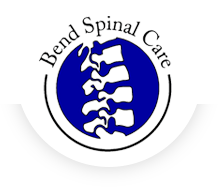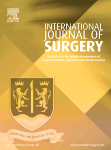Pulse Wave™ Focused Shockwave Therapy
Non-Invasive Relief That Activates Your Body's Own Healing

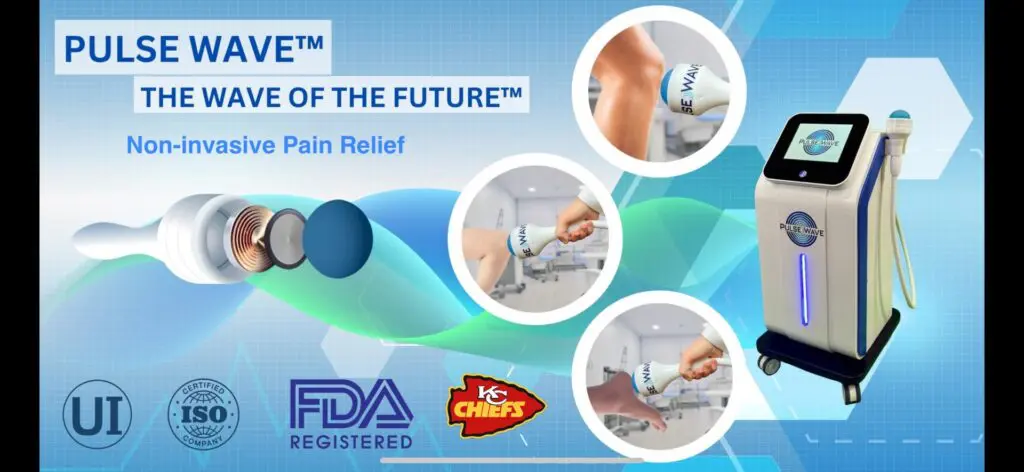
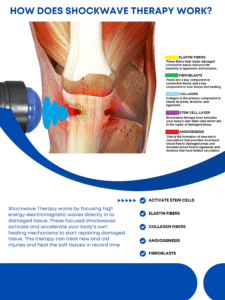

95%+ Soft-Tissue Success
300+ Peer-Reviewed Studies
10+ Randomized, Double-blind RCT's
Relief Timeline:
Many feel improvement after the first session; most within 1-2 weeks.
Plan of Care:
Typically 4-8 treatments (1-2x/week for 4-8 weeks).
Downtime:
Return to daily activities right away; limit heavy exercise for 24-48 hours.
Insurance Coverage:
Not currently covered by insurance; we offer per-visit and discounted 3-pack pricing options.
Your Treatment Plan
- Consultation & Examination - The doctor examines your condition and discusses your goals.
- Personalized Protocol - We tailor session intensity and focus to the target tissue.
- Series of Sessions - Typically 4-8 treatments over 4-8 weeks.
- Re-evaluate - Track progress and adjust if needed.
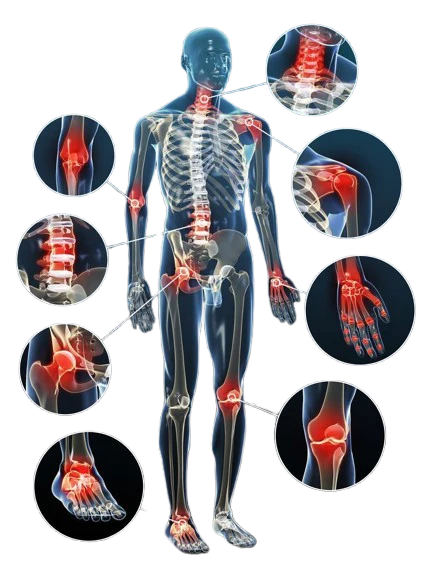
Conditions We Treat
Focused Shockwave Therapy is effective for a wide range of musculoskeletal problems and injuries.
Tennis Elbow Golfer's Elbow Tendonitis
Patellofemoral Syndrome Plantar Fasciitis
Carpal Tunnel Labrum Injuries Neuropathy
Rotator Cuff Injuries Frozen Shoulder
Back Pain Facet Pain Neck Pain
Safety and Comfort
Focused Shockwave Therapy is very save with no known long-term adverse effects.
- Mild treatment-time discomfort is possible
- Temporary soreness, swelling, or tenderness may occur
- Occasional bruising or tingling can happen
Most patients can return to regular activity immediately. We may advise avoiding heavy exercise for 24-48 hours.

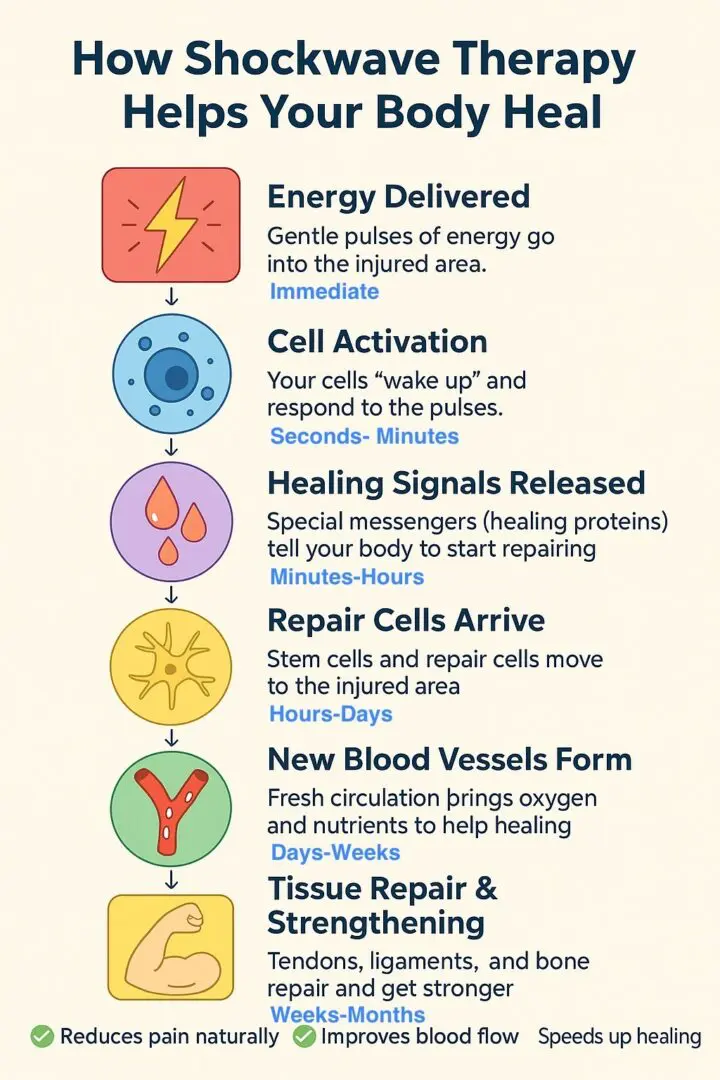
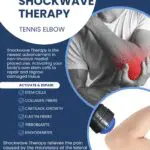
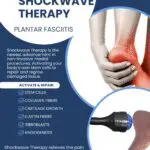
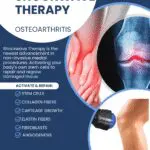

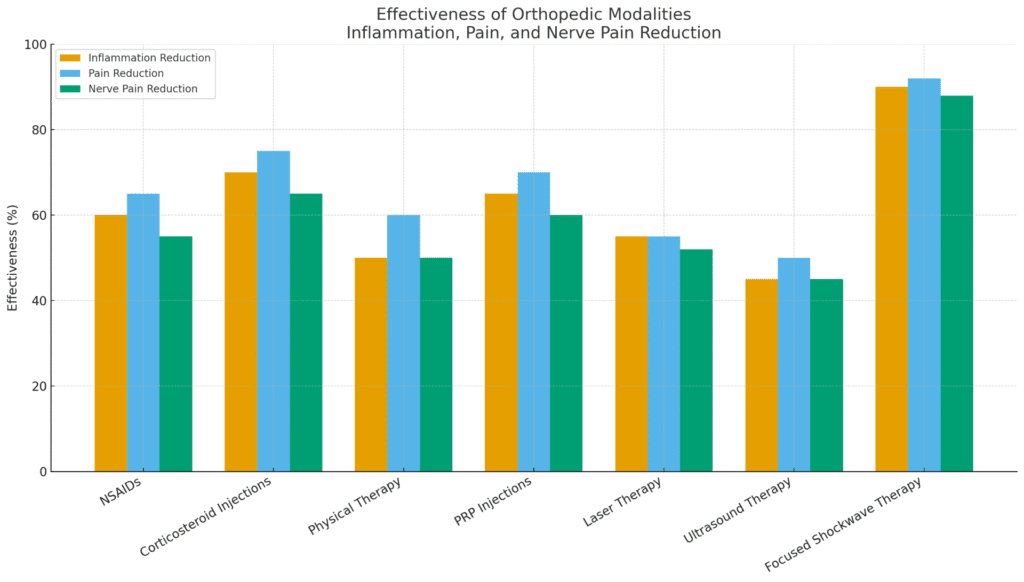
Contraindications
- Coagulation disorders or anticoagulant use
- Active thrombosis, tumor, or carcinoma
- Pregnancy
- Polyneuropathy (eg., in diabetes)
- Cortisone injection within 4-6 weeks at the site
- Pacemaker or metal implant at treatment area
- Children still in growth
Please avoid oral/topical anti-inflammatories before treatment
What Does the Research Say?
Effectiveness of Focused Shockwave Therapy versus Radial Shockwave Therapy for Non-calcific Rotator Cuff Tendinopathies: A Randomized Clinical Trial
Chengxin Li 1, Zhizhuo Li 1, Lijun Shi 2, Peixu Wang 2, Fuqiang Gao 3, Wei Sun 3,
- Author information
- Article notes
- Copyright and License information
PMCID: PMC7811429 PMID: 33506031
Conclusions
Both F-SWT and R-SWT are effective in patients with non-calcific rotator cuff tendinopathy. F-SWT proved to be significantly superior to R-SWT at long-term follow-up (more than 24 weeks).
Focused extracorporeal shockwave therapy for the treatment of low back pain: a systematic review
Dilyan Ferdinandov 1,2,3,*
- Author information
- Article notes
- Copyright and License information
PMCID: PMC11390445 PMID: 39267973
Conclusion: Focused ESWT is a modern physiotherapeutic method that can potentially treat a broad spectrum of conditions responsible for low back pain. Despite the small number of low-evidence studies, there is sufficient data on the effectiveness and safety of this therapeutic modality.
Efficacy of Extracorporeal Shock Wave Therapy for Lateral Epicondylitis: A Systematic Review and Meta-Analysis
Gaowen Yao 1, Jing Chen 2, Yanji Duan 1, Xiao Chen 1,
- Author information
- Article notes
- Copyright and License information
PMCID: PMC7106907 PMID: 32309425
Conclusion: Based on the existing clinical evidence, extracorporeal shock wave therapy can effectively relieve the pain and functional impairment (loss of grip strength) caused by tennis elbow, with better overall safety than several other methods. However, owing to the limited quality and quantity of the included studies, more high-quality RCTs are needed to support the trend towards better functional outcomes with ESWT.
Effectiveness of shockwave therapy in the treatment of plantar fasciitis
Renan Gonçalves Leão 1, Marina Mayumi Azuma 1, Gustavo Henrique Carillo Ambrosio 1, Flavio Faloppa 1, Eduardo Shoiti Takimoto 1, Marcel Jun Sugawara Tamaoki 1
- Author information
- Article notes
- Copyright and License information
PMCID: PMC7006537 PMID: 32095104
Conclusion: Shock wave therapy was effective for plantar fasciitis treatment according to the proposed protocol considering pain, function and quality of life. Level of Evidence Ic, Case-series Study.
Long Term Effectiveness of ESWT in Plantar Fasciitis in Amateur Runners
Joanna Kapusta 1,*, Marcin Domżalski 2
Editor: Umile Giuseppe Longo
- Author information
- Article notes
- Copyright and License information
PMCID: PMC9737564 PMID: 36498501
Conclusions: Extracorporeal shock wave therapy is an effective form of therapy for amateur runners. It reduces pain associated with plantar fasciitis that amateur runners may experience at rest, while walking, and during daily and recreational activity.
Comparative Effectiveness of Focused Extracorporeal versus Radial Extracorporeal Shockwave Therapy for Knee Osteoarthritis—Randomized Controlled Study
Nai-Yu Ko 1, Chih-Ning Chang 1, Chu-Han Cheng 1, Hui-Kung Yu 2, Gwo-Chi Hu 1,3,*
Editor: Paul B Tchounwou
- Author information
- Article notes
- Copyright and License information
PMCID: PMC9332723 PMID: 35897371
Both groups showed significant improvement in secondary outcomes; however, the f-ESWT group yielded greater improvement in the VAS score, WOMAC score, and 6-minute walk test. Our results showed that f-ESWT was more effective than r-ESWT in improving pain and physical function in patients with knee osteoarthritis.
Effectiveness and Safety of Shockwave Therapy in Tendinopathies
Vasileios Dedes 1, Apostolos Stergioulas 2, Georgios Kipreos 2, Ariadni Maria Dede 3, Athanasios Mitseas 4, Georgios I Panoutsopoulos 1
- Author information
- Article notes
- Copyright and License information
PMCID: PMC6029898 PMID: 30061805
The results of the present study clearly indicate that shockwave therapy achieved a significant reduction in pain as well as a significant improvement in both the functionality and quality of life after the completion of the therapeutic intervention and the 4-week follow-up in patients suffering from plantar fasciitis, elbow tendinopathy, Achilles tendinopathy and rotator cuff tendinopathy. Significant pain reduction and improvement in functionality and quality of life were also observed in the control groups of each tendinopathy, but these findings were less pronounced than those in the group treated with shock waves.
Extracorporeal shock wave therapy mechanisms in musculoskeletal regenerative medicine
Claudio Lopes Simplicio a, Joseph Purita b, William Murrell c, Gabriel Silva Santos d,∗, Rafael Gonzales dos Santos d, José Fábio Santos Duarte Lana d
- Author information
- Article notes
- Copyright and License information
PMCID: PMC7275282 PMID: 32523286
ESWT works by the emission of acoustic waves (shockwaves) that carry energy and can propagate through tissues. Shockwaves can generate interstitial and extracellular responses, producing many beneficial effects such as: pain relief, vascularization, protein biosynthesis, cell proliferation, neuro and chondroprotection, and destruction of calcium deposits in musculoskeletal structures. The combination of these effects can lead to tissue regeneration and significant alleviation of pain, improving functional outcomes in injured tissue. Considering these facts, ESWT shows great potential as a useful regenerative medicine technique for the treatment of numerous musculoskeletal injuries.
Extracorporeal shockwave therapy for degenerative meniscal tears results in a decreased T2 relaxation time and pain relief: An exploratory randomized clinical trial
Shogo Hashimoto 1, Takashi Ohsawa 1, Hiroaki Omae 2, Atsufumi Oshima 3, Ryota Takase 1, Hirotaka Chikuda 1
Conclusion: ESWT decreased the T2 relaxation time in the meniscus at 12 months post-treatment. ESWT also provided pain relief, but no differences were observed in clinical outcomes.
EXTRACORPOREAL SHOCKWAVE THERAPY IN SHOULDER INJURIES: PROSPECTIVE STUDY
Victor Otavio Moraes DE Oliveira 1, Juliana Munhoz Vergara 1, Vicente Furquim DE Oliveira 1, Paulo Henrique Schmidt Lara 1, Luiz Carlos Nogueira 1, Gustavo Gonçalves Arliani 1
Conclusion: Extracorporeal shockwave therapy proved to be efficient and safe in the treatment of shoulder pathologies, improving pain, range of motion and functional scores in all groups of patients evaluated in the study. Level of Evidence IV, Case series.
Extracorporeal shockwave therapy as a novel and potential treatment for degenerative cartilage and bone disease: Osteoarthritis. A qualitative analysis of the literature
Qiaodan Ji 1, Pu Wang 1, Chengqi He 2
The effect of extracorporeal shock wave therapy on the treatment of moderate to severe knee osteoarthritis and cartilage lesion
Yongming Xu 1, Kun Wu 2, Yu Liu 2, Huan Geng 2, Haochong Zhang 2, Shuitao Liu 3, Hongying Qu 4, Gengyan Xing 2
Conclusions: The ESWT has potential in reducing pain and improving knee function, and the therapeutic effects may peak at 8 weeks after the completion of treatment.
What does the research say about focused shockwave and delayed-union and non-union fractures?
Research supports the use of focused shockwave for treating both delayed and non-union fractures, reporting it to be a reliable and safe modality (Mittermayr et al., 2021) with a success rate as high as 85% (Schleusser et al., 2020).
The Efficacy of Focused Extracorporeal Shock Wave Therapy and Ultrasound Therapy in the Treatment of Calcar Calcanei: A Randomized Study
Ivana Topalović 1, Dejan Nešić 2, Sindi Mitrović 3, Vera Miler Jerković 4, Ljubica Konstantinović 3
Patients treated with standard ultrasound therapy did not have a statistically significant reduction in the calcification size. In contrast, the patients in the experimental group treated with f-ESWT showed a substantial decrease in the calcification size.
Extracorporeal Shockwave Therapy as an Adjunctive Therapy for Frozen Shoulder: A Systematic Review and Meta-analysis
Ruihan Zhang *, Zhenyu Wang *,†, Ruishu Liu ‡, Nan Zhang *, Jiaxun Guo *, Yunxia Huang *
Conclusion: ESWT seems to be beneficial to patients with frozen shoulder by alleviating pain and improving function.
Efficacy of Extracorporeal Shockwave Therapy in Frozen Shoulder
Babak Vahdatpour 1, Parisa Taheri 1, Abolghasem Zare Zade 1,
Conclusions: The use of ESWT seems to have positive effects on treatment, quicker return to daily activities, and quality-of-life improvement on frozen shoulder.
The Role of Extracorporeal Shock Wave Therapy in the Treatment of Muscle Injuries: A Systematic Review
Yuriy Mazin 1,
ESWT was associated with less pain on VAS, better function, reduction of size of lesion on ultrasound evaluation, faster RTP and/or lower re-injury rate in patients with indirect and direct muscle injuries and muscular hematomas, a frequent secondary complication of muscle injuries. The evidence regarding the use of ESWT for these types of injuries is therefore promising.
Clinical evaluation of the efficacy of focused extracorporeal shock-wave therapy in patients with cervical spondylosis: A randomized control trial
Shuangyue Li 1, Jie Liu 2, Yan Wang 3, Chan Zhu 1, Yahong Tang 1, Minghong Gu 1
Conclusion: The fESWT has shown promising therapeutic effects in the treatment of cervical spondylosis. It effectively reduces patient pain, improves cervical function, and enhances the quality of life, making it worthy of clinical promotion and applicationSh.
The Effect of Extracorporeal Shock Wave Therapy on Pain Intensity and Neck Disability for Patients With Myofascial Pain Syndrome in the Neck and Shoulder: A Meta-Analysis of Randomized Controlled Trials
Ji Hyun Jun 1, Geun-Young Park, Choong Sik Chae, Dong-Churl Suh
Conclusions: Extracorporeal shock wave therapy is superior to other treatments in terms of alleviating the pain intensity and pressure pain threshold of patients with myofascial pain syndrome in the neck and shoulder at postintervention. In particular, focused extracorporeal shock wave therapy shows significant improvement in pain relief. However, radical extracorporeal shock wave therapy for myofascial pain syndrome treatment still remains unclear.
Focused extracorporeal shockwave therapy for youth sports-related apophyseal injuries: case series
Journal of Orthopaedic Surgery and Research volume 18, Article number: 616 (2023)
Conclusion: ESWT is a potentially safe and effective treatment for apophyseal injuries. It may facilitate an early return to sport activities.
Efficacy and safety of extracorporeal shock wave therapy for orthopedic conditions: a systematic review on studies listed in the PEDro database
Christoph Schmitz †,*, Nikolaus B M Császár †, Stefan Milz †, Matthias Schieker ‡, Nicola Maffulli §,¶, Jan-Dirk Rompe ||, John P Furia ††
ESWT has been proven as an effective and safe non-invasive treatment option for tendon and other pathologies of the musculoskeletal system in a multitude of high-quality RCTs. For plantar fasciopathy, non-calcific tendinopathy of the supraspinatus tendon and calcifying tendonitis of the shoulder RCTs on ESWT are the predominant type of RCT in PEDro and obtained the highest PEDro scores among all investigated treatment modalities for these conditions. The latter criterion was also achieved for Achilles tendinopathy and lateral epicondylitis, albeit in a smaller number of RCTs. Therefore, ESWT should be considered by medical doctors, therapists, patients and payers when discussing treatment options for certain musculoskeletal pathologies.
Extracorporeal shock wave therapy mechanisms in musculoskeletal regenerative medicine
Claudio Lopes Simplicio a, Joseph Purita b, William Murrell c, Gabriel Silva Santos d,∗, Rafael Gonzales dos Santos d, José Fábio Santos Duarte Lana d
Extracorporeal shockwave therapy (ESWT) is a popular non-invasive therapeutic modality in the medical field for the treatment of numerous musculoskeletal disorders. This technique first emerged around the 1980s as extracorporeal shockwave lithotripsy and has been studied since then for its application towards orthopedics and traumatology. ESWT works by the emission of acoustic waves (shockwaves) that carry energy and can propagate through tissues. Shockwaves can generate interstitial and extracellular responses, producing many beneficial effects such as: pain relief, vascularization, protein biosynthesis, cell proliferation, neuro and chondroprotection, and destruction of calcium deposits in musculoskeletal structures. The combination of these effects can lead to tissue regeneration and significant alleviation of pain, improving functional outcomes in injured tissue. Considering these facts, ESWT shows great potential as a useful regenerative medicine technique for the treatment of numerous musculoskeletal injuries.
Effectiveness and Safety of Shockwave Therapy in Tendinopathies
Vasileios Dedes 1, Apostolos Stergioulas 2, Georgios Kipreos 2, Ariadni Maria Dede 3, Athanasios Mitseas 4, Georgios I Panoutsopoulos 1
Conclusions: Shockwave therapy significantly reduced the pain that accompanies tendinopathies and improves functionality and quality of life. It might be first choice because of its effectiveness and safety.
Efficacy of high energy, focused ESWT in treatment of lumbar facet joint pain - a randomized sham-controlled trial
Tomas Nedelka 1 2 3, Jakub Katolicky 2 4, Jiri Nedelka 2, Paul Hobrough 5, Karsten Knobloch 6
Conclusions: High-energy focused ESWT is a safe and effective non-invasive therapy for chronic lumbar facet joint pain, showing sustained improvements in pain, function, and neuropathic symptoms. MRI findings support its biological effect on joint-related bone marrow edema. ESWT represents a promising alternative to interventional pain procedures.
EFFICACY OF FOCUSED SHOCKWAVE THERAPY IN PATIENTS WITH MODERATE-TO-SEVERE CARPAL TUNNEL SYNDROME: A PRELIMINARY STUDY
Pimpisa VONGVACHVASIN 1, Thitiporn PHAKDEPIBOON 2, Waree CHIRA-ADISAI 2, Punpetch SIRIRATNA 2
Conclusion: Focused extracorporeal shockwave therapy plus conservative treatment effectively provided short-term improvement in symptoms, hand function, and nerve conduction in patients with moderate-to-severe carpal tunnel syndrome compared with conservative treatment alone.
Effectiveness of focused extracorporeal shock wave therapy in the treatment of carpal tunnel syndrome
A randomized, placebo-controlled pilot study
Christina Gesslbauer 1, Michael Mickel 1, Othmar Schuhfried 1, Dominikus Huber 1, Mohammad Keilani 1, Richard Crevenna 1
Conclusion: Focused extracorporeal shock wave therapy is an effective and noninvasive treatment method for mild to moderate carpal tunnel syndrome.
Extracorporeal Shock Wave Therapy in Dupuytren’s Disease
Serkan Aykut 1,
Conclusion: We can suggest that ESWT in the early term can be preferred over costly injections and surgical intervention options as it increases the quality of life and delays the recurrence of contractures.
The Effect of Shock Wave Therapy on Improving the Symptoms and Function of Patients with Dupuytren's Contracture
Parisa Taheri 1, Najmeh Salek 1, Maryam Mousavi 1, Razieh Maghroori 1
Conclusion: It can be concluded that shock wave therapy can be effective in improving the symptoms and function of patients with Dupuytren's Contracture.
Comparison Between Extracorporeal Shock Wave Therapy and Intra-articular Hyaluronic Acid Injections in the Treatment of First Carpometacarpal Joint Osteoarthritis
Francesco Ioppolo 1, Fabiana Saracino 1, Rosaria Sabrina Rizzo 1, Giampaolo Monacelli 2, Danilo Lanni 1, Luca Di Sante 1, Angelo Cacchio 3, Valter Santilli 1, Teresa Venditto 1
Conclusion: The use of ESWT in patients with first CMC joint osteoarthritis leads to a reduction in pain, an improvement in pinch test performance that persists for at least 6 months, and a decrease in hand disability up to the 6-month follow-up visit.
Application of extracorporeal shock wave therapy in nervous system diseases: A review
Juan Guo 1, Hong Hai 1, Yuewen Ma 1
ESWT is a form of mechanotherapy with a peak pressure of about 1,000 times more than ultrasound therapy (27). ESWT can be classified into focused ESWT (fESWT) and radial ESWT (rESWT) based on the wave patterns used (28). In general, a focused extracorporeal shock wave (fESW) is generated electrohydraulically, electromagnetically, or piezoelectrically, followed by converging it into a focal tissue zone (29). As an acoustic wave, fESW is characterized by its high pressure of more than 1,000 bar (100 MPa), an extremely short rise time (<10 ns), a short duration (<10 ms), and a broad frequency spectrum (16–20 MHz) (30–32). Unlike fESW, radial extracorporeal shock wave (rESW) does not possess the shock wave characteristics of a short rise time, a high peak pressure, and non-linearity. Some scholars even call “rESW” “radial pressure waves” because rESW uses the energy generated from compressed gas to drive the bullet body to the treated tissue area in a pulsed manner
Chapter Three - The Use of Shock Waves in Peripheral Nerve Regeneration: New Perspectives?
Author links open overlay panelThomas Hausner * † ‡, Antal Nógrádi * §
ESWT appears to have differential effects on peripheral nerves and has been proved to promote axonal regeneration after axotomy.
Effect of extracorporeal shock wave therapy on nerve conduction: a systematic review and meta-analysis
Liuxin Yang 1, Xuan Li 1, Shuhan Li 1, Jiao Yang 1, Dianhuai Meng 1
Conclusion: ESWT had some excitatory effect on peripheral nerves, especially on sensory nerve studies. Although the efficacy of this treatment was superior to that of the control group, and the combined treatment with PT was more effective than PT alone.
Long-term effect of shock wave therapy on upper limb hypertonia in patients affected by stroke
Conclusions: ESWT reduces hypertonia of the wrist and finger muscles for > or =12 weeks after treatment.
The effect of extracorporeal shock wave on joint capsule fibrosis based on A2AR-Nrf2/HO-1 pathway in a rat extending knee immobilization model
The effectiveness of extracorporeal shockwave treatment in subacromial impingement syndrome and its relation with acromion morphology
Conclusion: ESWT was found to be effective in the treatment of impingement syndrome both for pain and functional outcome in the early period regardless of acromion morphology.
Changes of articular cartilage and subchondral bone after extracorporeal shockwave therapy in osteoarthritis of the knee
Conclusion: ESWT is effective in the prevention on the initiation of ACLT and MM induced osteoarthritis of the knee in rats. We expanded our previous study and detail described the pathological changes in articular cartilage and subchondral bone. ESWT showed the site-sensitive and location-specific with the best results when ESWT are simultaneously applied to medial distal femur and proximal tibia.
Enhancement of hyaline cartilage and subchondral bone regeneration in a rat osteochondral defect model through focused extracorporeal shockwave therapy
modulation of transforming growth factor-beta and bone morphogenetic proteins-2, -3, -4, -5, and -7 expression
 ,#, Shun-Wun Jhan 1,4, Po-Cheng Chen 5, Shan-Ling Hsu 1,4, Ching-Jen Wang 1,4, Daniel Moya 6, Yi-No Wu 7, Chien-Yiu Huang 1,2, Wen-Yi Chou 1,4, Kuan-Ting Wu 1,4,
,#, Shun-Wun Jhan 1,4, Po-Cheng Chen 5, Shan-Ling Hsu 1,4, Ching-Jen Wang 1,4, Daniel Moya 6, Yi-No Wu 7, Chien-Yiu Huang 1,2, Wen-Yi Chou 1,4, Kuan-Ting Wu 1,4,Conclusion: ESWT promoted the effect of TGF-β/BMPs, thereby modulating the production of extracellular matrix proteins and transcription factor involved in the regeneration of articular cartilage and subchondral bone in an OCD rat model.
The effect of shock wave treatment at the tendon-bone interface-an histomorphological and biomechanical study in rabbits
The effect of extracorporeal shockwaves on cartilage end-plates in rabbits: a preliminary MRI and histopathological study
The Effect of Extracorporeal Shock Wave Therapy
Resources & Studies:
- "Shock Waves In The Treatment of Stress Fractures."
- "Extracorporeal Shock Wave Therapy Accelerates Regeneration After Acute Skeletal Muscle Injury."
- "Extracorporeal Shock Wave Therapy is Effective in the Treatment of Bone Marrow Edema of the Medical Compartment of the Knee: A Comparative Study."
- "Extracorporeal Shock Wave Therapy in the Treatment of Primary Bone Marrow Edema Syndrome of the Knee: A Prospective Randomised Controlled Study."
- Extracorporeal shock wave treatment can normalize painful bone marrow edema in knee osteoarthritis: A comparative historical cohort study.
